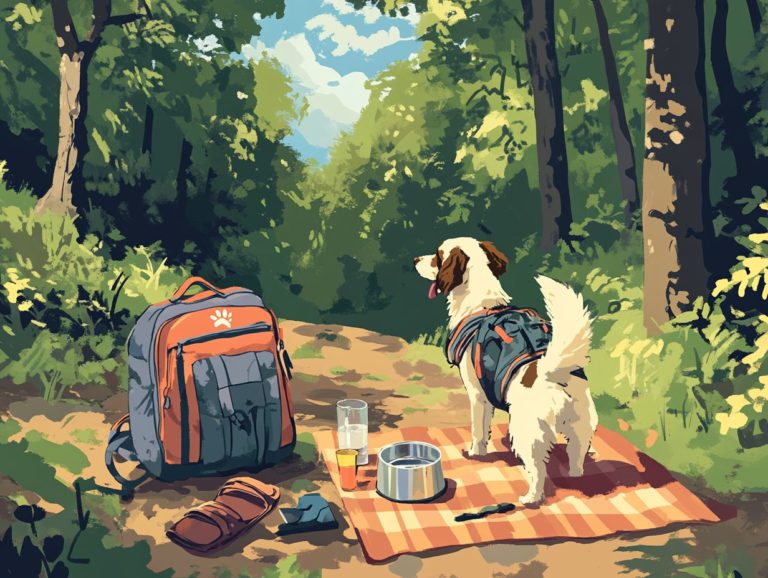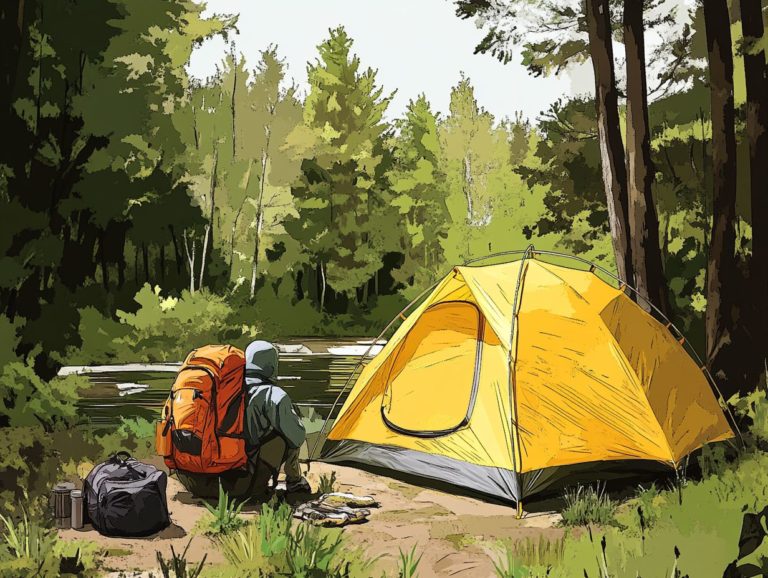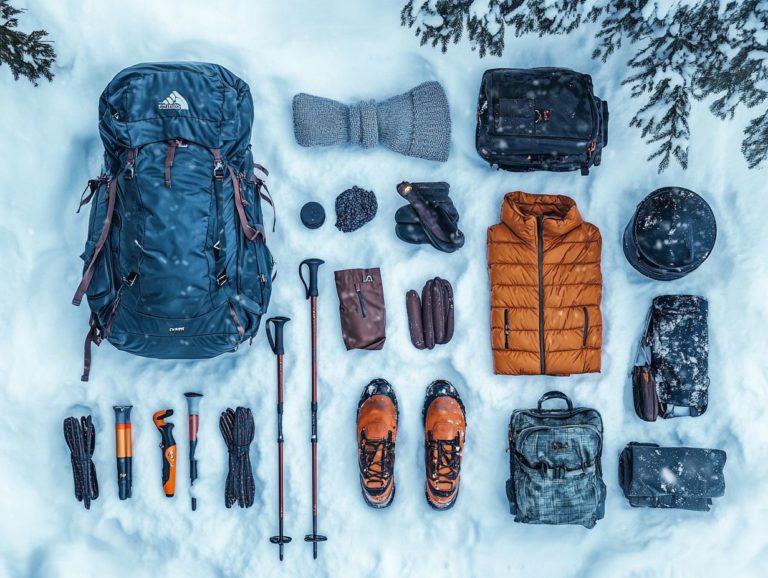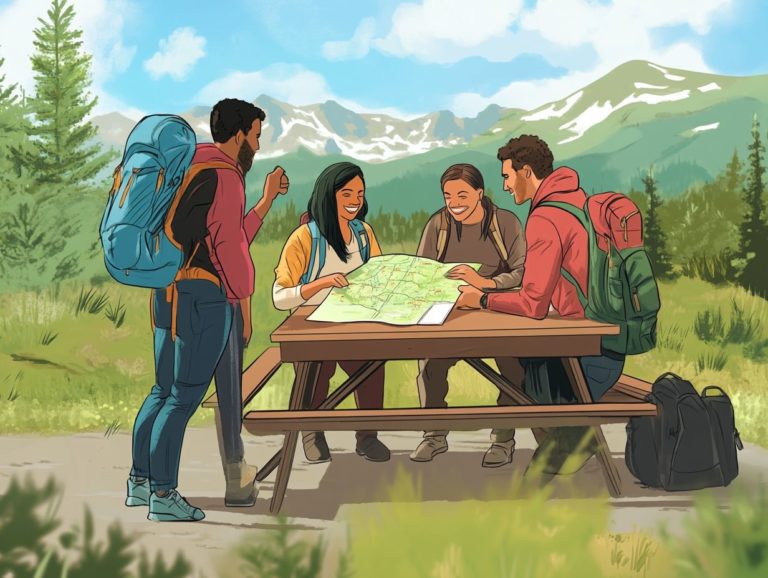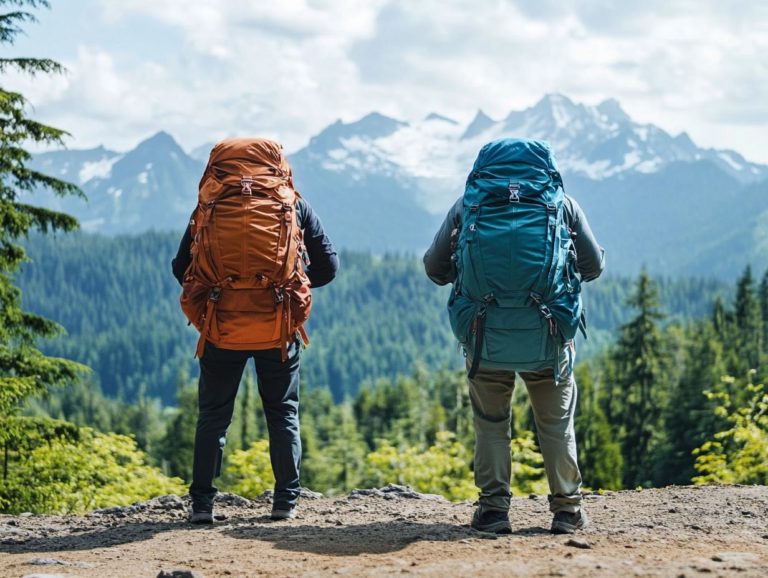Hiking Etiquette: Do’s and Don’ts
Hiking offers a remarkable opportunity to connect with nature. However, it carries responsibilities that ensure everyone can savor the experience to the fullest.
Understanding hiking etiquette is vital for preserving the beauty of our trails. It also nurtures a friendly environment among fellow adventurers.
You ll want to discover the essential do’s and don’ts everything from respecting the environment to being considerate of those sharing the path with you.
You will also find valuable safety tips and practical advice to elevate your outing.
Ready to make your hiking adventure unforgettable? Let s jump in!
Contents
Key Takeaways:
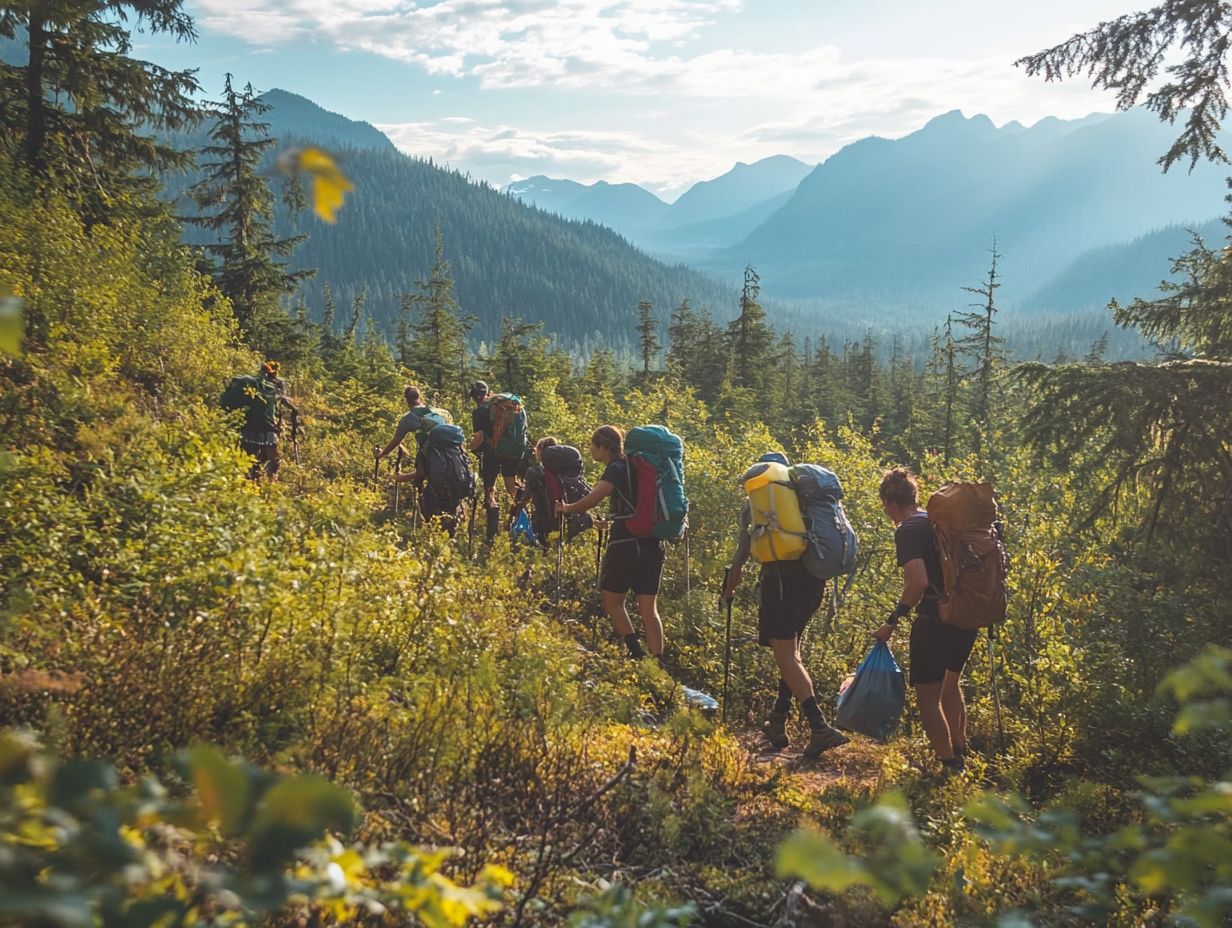
- Respect the environment by staying on designated trails and packing out all trash.
- Be considerate of other hikers by yielding to uphill hikers, controlling noise levels, and avoiding monopolizing scenic spots.
- Avoid behaviors such as littering, loud music, and disturbing wildlife to maintain a peaceful and enjoyable hiking experience for all.
Why is Hiking Etiquette Important?
Hiking etiquette creates a positive outdoor experience for everyone. This includes trail users, fellow hikers, and even wildlife.
By practicing proper hiking behavior, you safeguard the beauty of national parks and ecosystems. You also create a warm and welcoming atmosphere among those you might meet on the trails.
Embracing and applying these principles of hiking etiquette enhances safety, encourages respect, and fosters awareness. All of which are essential for both the enjoyment and preservation of our cherished outdoor spaces.
Do’s of Hiking Etiquette
Grasping the essentials of hiking etiquette can significantly elevate your outdoor adventures. It ensures both you and fellow trail users enjoy a safe and delightful experience while immersing yourselves in the stunning landscapes of national parks and varied ecosystems.
By following these guidelines, you champion responsible hiking while creating a friendly environment among fellow hikers. All the while, you minimize your impact on wildlife and the integrity of the trails.
Respecting the Environment
Respecting the environment is a cornerstone of hiking etiquette. It s all about embracing principles like Leave No Trace while being aware of wildlife and their habitats.
When you practice environmental respect, you’re actively contributing to the preservation of delicate ecosystems. Minimizing your human impact is essential.
Stick to established trails to avoid inadvertently damaging fragile plant life. Remember to pack out everything you bring in yes, that includes food wrappers and even those biodegradable materials to help maintain the natural beauty of the trails.
Effective communication with nature means observing wildlife from a distance. Prevent disturbances and allow animals to thrive in their natural habitats.
By adopting these practices, you enhance your enjoyment of the great outdoors. You also embrace a sense of responsibility for future generations, helping create an environment where everyone can marvel at the wonders of nature.
Being Considerate of Other Hikers
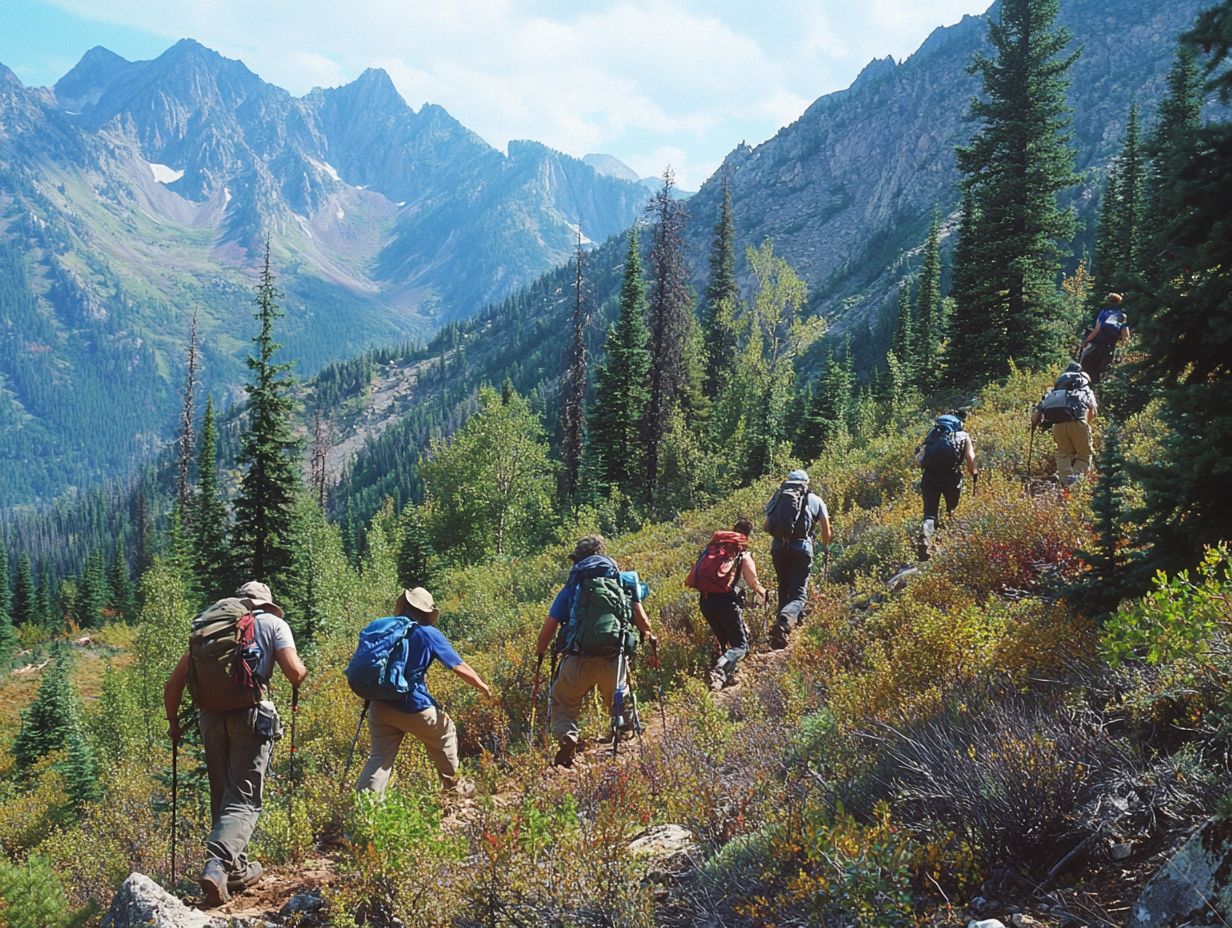
Being considerate of fellow hikers is essential for cultivating a positive and friendly atmosphere on the trails. This means understanding the right of way when you encounter other hikers or groups.
By demonstrating politeness and awareness, you can ensure that everyone enjoys their outdoor experience without any conflict or discomfort.
Recognizing that hikers traveling uphill generally have the right of way is key to fostering harmonious interactions. Communication is vital; a simple greeting or acknowledgment can significantly enhance camaraderie among trail users.
If you’re part of a larger hiking group, keeping noise levels down and stepping aside for smaller parties helps maintain the tranquil environment many seek.
Practicing patience, offering encouragement, and appreciating fellow adventurers elevate the overall experience. This reminds everyone that the wilderness is a shared treasure for all who cherish it.
Ready to hit the trails? Let s make every hike a memorable one!
Don’ts of Hiking Etiquette
Grasping the don’ts of hiking etiquette is equally as important as mastering the do’s. Certain behaviors can considerably diminish the outdoor experience for both fellow hikers and wildlife.
By steering clear of common missteps, you can create a friendly atmosphere that enhances safety and enjoyment for everyone sharing in the adventure of nature.
Behaviors to Avoid
There are several specific behaviors you should avoid when it comes to hiking etiquette. Ignoring trail conditions, venturing alone into dangerous areas, or failing to yield the right of way to other trail users can compromise your safety.
Stepping off established paths can damage fragile ecosystems and frighten away local wildlife. Lighting fires in prohibited areas can cause serious problems and may spark wildfires. Neglecting to pack out your trash creates hazards for wildlife and fellow adventurers who deserve a clean, safe environment.
Loud noises disturb the tranquil atmosphere of nature and alarm animals, potentially altering their natural behaviors. By following these mindful practices, you can ensure your own safety and help preserve the breathtaking landscapes you wish to explore.
Safety Considerations for Hiking
Safety considerations are essential for a truly enjoyable hiking experience. This includes everything from donning the right gear to ensuring you have a well-stocked first aid kit on hand.
By adhering to safety guidelines and preparing thoroughly for your outdoor excursions, you can minimize risks and maximize the joy of your adventures in nature, ensuring that your outing is both memorable and safe.
Preparing for Emergencies

Preparing for emergencies is a crucial part of hiking safety. It s vital to carry a well-equipped first aid kit and know how to use its contents effectively. Whether you re hiking solo or with a group, being prepared enhances your outdoor experience and provides peace of mind for unexpected situations.
Know how to assess your surroundings to stay safe. Emergency preparedness requires a mental readiness to confront challenges, setting the stage for effective decision-making.
When putting together your first aid kit, consider including these key items:
- Adhesive bandages
- Antiseptic wipes
- Gauze rolls
- A pain reliever
- A flashlight
These essentials can be invaluable during unforeseen events. Conducting a risk assessment before heading out allows you to identify potential threats, ensuring a safer and more enjoyable adventure.
Tips for Practicing Good Hiking Etiquette
Practicing good hiking etiquette includes a blend of considerate behaviors and practical insights that can significantly elevate your outdoor experience while fostering a welcoming atmosphere among fellow hikers.
By integrating key hiking tips into your routine, you play a vital role in creating a more enjoyable and respectful environment for all who share the trails.
Get ready for your next adventure by following these simple rules!
Practical Advice for a Positive Hiking Experience
To elevate your hiking experience, consider embracing practical advice during your outings. Communicate effectively with fellow hikers and commit to sustainable trails. By practicing these principles of hiking etiquette, you contribute to a friendly atmosphere and cultivate a sense of community among nature enthusiasts.
Staying mindful of your surroundings is crucial. Maintain a safe distance from wildlife not only to protect the animals but also to enrich your own experience in the wild. Remember to always pack out what you pack in. This simple act helps preserve the natural beauty of the trails for future adventurers.
Encourage group communication. Checking in with your hiking companions can help prevent accidents and ensure that everyone enjoys the journey. Be respectful to fellow hikers and share the trails responsibly. This creates opportunities for everyone to connect with nature and each other, ultimately enhancing the outdoor experience for the entire community.
Frequently Asked Questions
What are some basic hiking etiquette do s and don ts?

Do:
- Stay on designated trails
- Always yield to uphill hikers
- Pack out all trash and leave no trace
- Respect wildlife and their habitats
- Be aware of and follow any posted rules and regulations
Don t:
- Leave trash or waste on the trail
- Disturb or damage plants or wildlife
- Make excessive noise
- Smoke or start a fire in restricted areas
- Go off-trail without permission
Is it okay to bring my dog on a hike?
It depends on the trail and its rules. Some trails allow dogs but require them to be on a leash at all times. Others may not permit dogs at all. Research the trail conditions beforehand and follow any leash or pet restrictions to ensure the safety of your pet and other trail users.
What should I do if I encounter other hikers on the trail?
Always yield to uphill hikers and step aside to let them pass. If hiking in a group, move in a single file line to allow enough space for others to pass. If you are listening to music, consider turning it down or using headphones so you can hear others approaching. Always greet other hikers with a friendly smile and hello! Practicing proper hiking etiquette creates a friendly atmosphere on the trails.
Should I bring food and water on a hike?
Yes! It’s crucial to always bring enough food and water for your hike. This keeps you energized and hydrated while also preventing littering on the trail. Make sure to pack out all trash and leftovers, including food scraps, to keep the trail clean and protect wildlife. Following Leave No Trace principles ensures sustainable trails for future users.
Are there any specific rules for hiking in a group?
Yes! When hiking in a group, stay together and don t leave anyone behind. This helps prevent unnecessary injuries or getting lost. Communicate any breaks or detours with the group and follow all trail rules and regulations together. Be mindful of wildlife when hiking in a group.
Ready to hit the trails? Prepare wisely and enjoy the adventure!
What Should I Do If I Encounter Wildlife?
When you see wildlife on the trail, keep a safe distance. Avoid feeding or touching the animals.
If you have a dog, ensure it is on a leash and under control. Respect the animals and their homes.
If you’re unsure what to do, reach out to a park ranger or wildlife expert for assistance, especially in areas known for bears. Your safety and the animals’ is a top priority!

